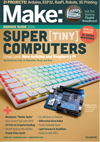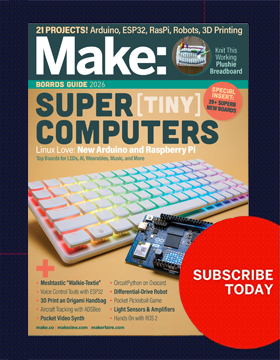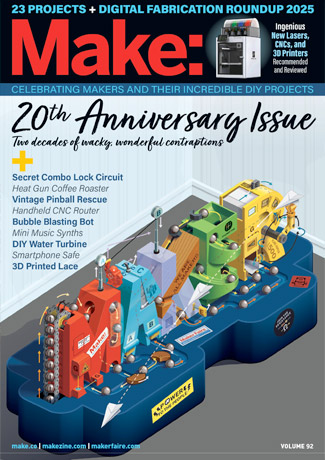
LED cubes involve lights are arranged in such a way that they can be lit in three dimensions, forming interesting shapes. Though even the simplest of these devices could be a challenge, Dennis, who goes by the username “nqtronix” on instructables, decided to take on the challenge, and built his own extremely small LED cube.
Though it’s impossible to determine whether some hacker in his or her basement has come up with something smaller, until someone else claims the title, I’d have to assume that this device, measuring 13×13×36mm including all electronics, is indeed the world’s smallest cube (technically a rectangular cuboid) of this nature. Dennis’ build was inspired by this also very small HariFun cube, which is also incredible, but when if we’re going for records every “little bit” counts.
After seeing HariFun’s cube, Dennis realized that since there were even smaller LEDs available, it would be possible to make an even smaller cube. He assembled his device using custom fixtures, and an enclosure made out of a PCB—inspired by this Hackaday article from Voja Antonic—to hold the battery and other electronics. Control is accomplished using an ATMEGA328PB using charlieplexing to control the 192 individual LEDs (4×4×4 RGB LED modules ×3 individual LEDS per module) in the arrangement.
Once soldered, painted, and arranged correctly Dennis covered his assembled LEDs in epoxy—an idea he got from Peter Brown’s videos, where he makes liberal use of the stuff—making sure to use a type that could be polished after setting (80 Shore D). Because of its small size, he was able to use a Tic Tac mint container as a mold.
Once things were set and polished, he assembled his enclosure, and inside went the needed batteries and electronics. Naturally, at this scale, the whole thing was an exercise in miniaturization. Dennis reports a few minor flaws, such as two LEDs that were soldered in parallel, but overall he reports that “It turned out way better than I was hoping for!”
Of interest is that he has an accelerometer integrated into this cube’s electronics. David says that:
The second largest chip in this build is the ADXL345, a very low power and reasonable priced accelerometer. The main reason to include it is the activity and inactivity detection feature. Forgotten to turn it of? No worries, it’ll do that on it’s own. Of course, there are many more things you can use this for, but to get there much code needs to be written.
Along with this, the device has 1 Megabit of EEPROM memory, enough to store 20 seconds of 30fps RGB video. Animation is currently only a test pattern, but once everything is programmed, it should make a spectacular little display, perhaps it could even be made responsive to a user’s movement!
Although it would make an interesting pendant on a necklace, the results are used instead on a key fob. One might surmise that this could also pass as the world’s most involved device on which to hang keys. According to David:
The whole project took about 5 month idea to publication, despite working on it every week. It’s complicated to give you an estimation on the total hours spend, but research, prototyping, design, building, programming and debugging may very well add up to 300-400 hours.
Which brings up another question that those of you that don’t have that kind of time to spend on a project. Are these for sale? The answer is that you’ll have to build one yourself, or as Dennis puts it:
The total part cost for this project is very low, especially if you’re OK with buying common parts (such as resistors, capacitors and transistors) in bulk. Despite that, I don’t think it’s economical sell these. The time required to solder each LED individually and assemble everything by hand is worth about 300€ – if I’d be willing work at minimum wage. So no, the only way to to one is by making one yourself.
The good news is that Dennis has done the research for you, so perhaps it would take you less time. If you can’t quite bring yourself to build one, but think it’s an awesome project, it’s currently entered into a “Make It Glow” contest on instructables. Be sure to give it a vote on the project’s page!
All photos via Dennis, AKA nqtronix.
ADVERTISEMENT




























